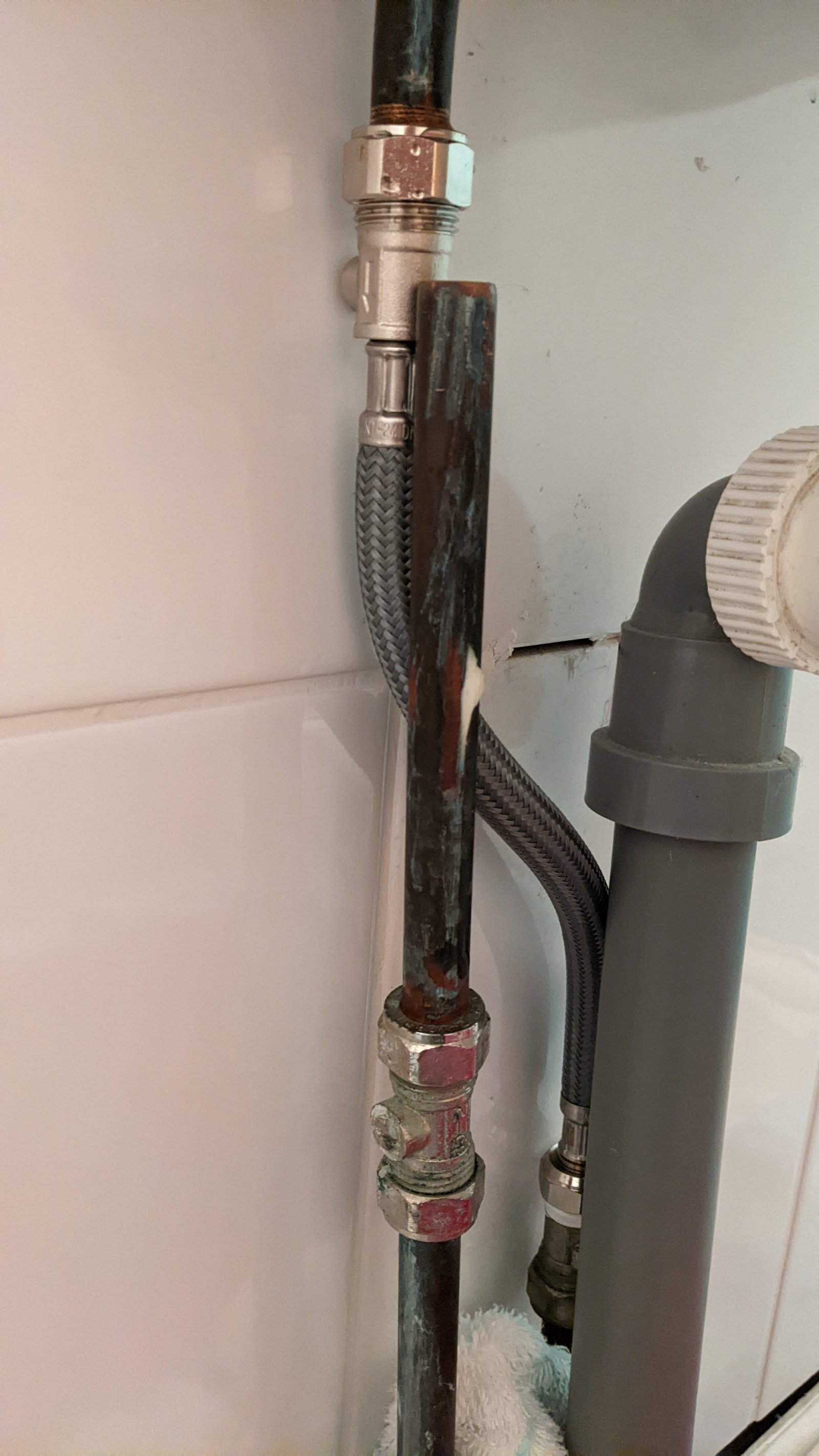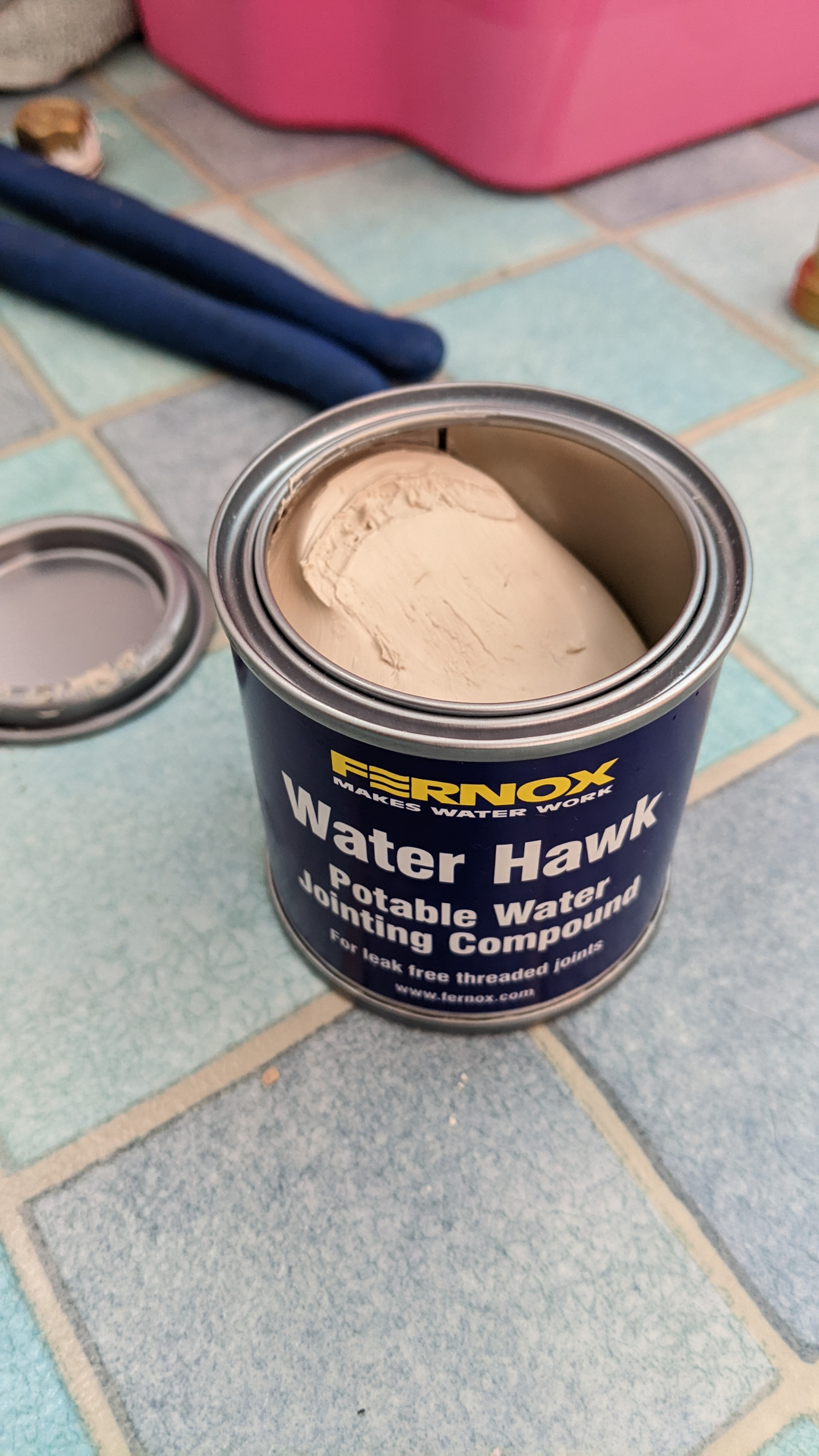We’d like to remind Forumites to please avoid political debate on the Forum.
This is to keep it a safe and useful space for MoneySaving discussions. Threads that are – or become – political in nature may be removed in line with the Forum’s rules. Thank you for your understanding.
The MSE Forum Team would like to wish you all a Merry Christmas. However, we know this time of year can be difficult for some. If you're struggling during the festive period, here's a list of organisations that might be able to help
📨 Have you signed up to the Forum's new Email Digest yet? Get a selection of trending threads sent straight to your inbox daily, weekly or monthly!
Has MSE helped you to save or reclaim money this year? Share your 2025 MoneySaving success stories!
How to cap off 15mm water pipe
Comments
-
kimwp said:I attempted a small plumbing job and now lots of things are leaking.
Main issue is how to cap off this pipe (see photo) I thought I would just be able to turn the isolation valve to block the flow, but it's leaking. I think I have two DIY options - cap off the isolation valve or cap off the pipe (which I've successfully reattached to the valve). A cap on the isolation valve would be neatest, but I'm not sure what I'm looking for - I can only find compression end caps - if it's the same thing another compression fittings ie with an olive, I don't think this would be the right thing as there's no pipe for the olive to be compressed onto? Can anyone advise on what I should be looking for? (Or doing - with the pipe or generally in life, I'm open to suggestions at this point)
(I know I've fitted the flexible pipe with the isolation valve facing the wall, I didn't spot that it had one
You can cap off the isolation valve with a blanking cap. Look for a valve blanking cap or stop end that matches the size of your valve. It usually has a flat end to seal the valve. If you can't find one, capping the pipe with a compression end cap is a good alternative. Make sure to shut off the water supply before attempting any fixes, and consider getting a professional plumber if you're unsure.
-2 -
Finally got round to getting compound (work has been busy), but it looks a bit more solid than I was expecting... Is this the right stuff?

Statement of Affairs (SOA) link: https://www.lemonfool.co.uk/financecalculators/soa.phpFor free, non-judgemental debt advice, try: Stepchange or National Debtline. Beware fee charging companies with similar names.1 -
I haven't used that actual stuff, and it's hard to judge how solid it is from the photo. Can you give it a mix? If you wipe your finger over it, does some come off that you can smear on to the olive and threads?kimwp said:Finally got round to getting compound (work has been busy), but it looks a bit more solid than I was expecting... Is this the right stuff? Slightly different product, but similar thickness?:0
Slightly different product, but similar thickness?:0 -
kimwp said:Finally got round to getting compound (work has been busy), but it looks a bit more solid than I was expecting... Is this the right stuff?Ithas the consistency of putty or a stiff mix of filler.As for being the "right stuff", I still maintain that you shouldn't need any sealant on a compression fitting.Any language construct that forces such insanity in this case should be abandoned without regrets. –
Erik Aronesty, 2014
Treasure the moments that you have. Savour them for as long as you can for they will never come back again.0 -
Ace, thanks both! I applied it to the insert as in the video, but I used the clip bit of a biro cap as a tiny shovel rather than my finger.
So I have a compression joint with PTFE on the outside of the olive, one with compound on the outside of the olive and one with the existing olive and tiny bit of compound - all watertight. The joint with the existing olive was watertight after I took it off and put it back initially, but when I accidentally loosened it trying the take the stop cap off, I added some compound for funsies.
Thank you mse-ers for your help with this- I'm very grateful and feeling a lot more confident 🙂Statement of Affairs (SOA) link: https://www.lemonfool.co.uk/financecalculators/soa.phpFor free, non-judgemental debt advice, try: Stepchange or National Debtline. Beware fee charging companies with similar names.1 -
PTFE tape is used on tapered threads (for example, the tails sticking out of a radiator). It serves no purpose on a compression fitting.
Any language construct that forces such insanity in this case should be abandoned without regrets. –
Erik Aronesty, 2014
Treasure the moments that you have. Savour them for as long as you can for they will never come back again.1 -
I put it round the olive, on the sealing surface, as I didn't have compound at the time.FreeBear said:PTFE tape is used on tapered threads (for example, the tails sticking out of a radiator). It serves no purpose on a compression fitting. https://youtu.be/njoB-N8hX5w?si=M2LJb3Sr3623wz7f Statement of Affairs (SOA) link: https://www.lemonfool.co.uk/financecalculators/soa.phpFor free, non-judgemental debt advice, try: Stepchange or National Debtline. Beware fee charging companies with similar names.1
https://youtu.be/njoB-N8hX5w?si=M2LJb3Sr3623wz7f Statement of Affairs (SOA) link: https://www.lemonfool.co.uk/financecalculators/soa.phpFor free, non-judgemental debt advice, try: Stepchange or National Debtline. Beware fee charging companies with similar names.1 -
That all sounds fine, Kim. (I like that YouTube plumber).Yes, a wrap or two of PTFE over the olive is fine as an alternative.Compound is better, tho'. Just a smear over the olive as in that vid, but I'd also recommend a smear over the exposed male thread of the fitting, as it acts as a lube. You will then not only avoid the hellish screech of the olive and the even worse creak of the nut, but being lubricated means you can much better sense how tight the fitting is becoming; all the resistance you will feel with your wrench is proper 'olive-compressing' resistance, and not useless friction.If you are new to compression fittings, it can be hard to know how tight to make a fitting. One way to judge this is to do up the nut and keep checking if you can still rotate the pipe in the fitting - it'll become very obvious when the olive has compressed enough to grab the pipe, and make it impossible to turn. At this point, it usually only requires around a half-turn extra to secure the seal, but also act on how more stiff it is becoming to turn. Again, with a lube'd thread and olive, virtually all the resistance you feel is true 'sealing' effort.0
-
Amazing, thank you for these tips! When doing the compression joints today, I did largely hand tighten then tighten a bit more with the wrench, with no squeaking, the lube sounds like a good trick though.ThisIsWeird said:That all sounds fine, Kim. (I like that YouTube plumber).Yes, a wrap or two of PTFE over the olive is fine as an alternative.Compound is better, tho'. Just a smear over the olive as in that vid, but I'd also recommend a smear over the exposed male thread of the fitting, as it acts as a lube. You will then not only avoid the hellish screech of the olive and the even worse creak of the nut, but being lubricated means you can much better sense how tight the fitting is becoming; all the resistance you will feel with your wrench is proper 'olive-compressing' resistance, and not useless friction.If you are new to compression fittings, it can be hard to know how tight to make a fitting. One way to judge this is to do up the nut and keep checking if you can still rotate the pipe in the fitting - it'll become very obvious when the olive has compressed enough to grab the pipe, and make it impossible to turn. At this point, it usually only requires around a half-turn extra to secure the seal, but also act on how more stiff it is becoming to turn. Again, with a lube'd thread and olive, virtually all the resistance you feel is true 'sealing' effort.
Statement of Affairs (SOA) link: https://www.lemonfool.co.uk/financecalculators/soa.phpFor free, non-judgemental debt advice, try: Stepchange or National Debtline. Beware fee charging companies with similar names.1
Confirm your email address to Create Threads and Reply

Categories
- All Categories
- 352.9K Banking & Borrowing
- 253.9K Reduce Debt & Boost Income
- 454.7K Spending & Discounts
- 246K Work, Benefits & Business
- 602.1K Mortgages, Homes & Bills
- 177.8K Life & Family
- 259.9K Travel & Transport
- 1.5M Hobbies & Leisure
- 16K Discuss & Feedback
- 37.7K Read-Only Boards



 https://www.youtube.com/watch?v=essm_Y1dBxk&t=129s
https://www.youtube.com/watch?v=essm_Y1dBxk&t=129s
